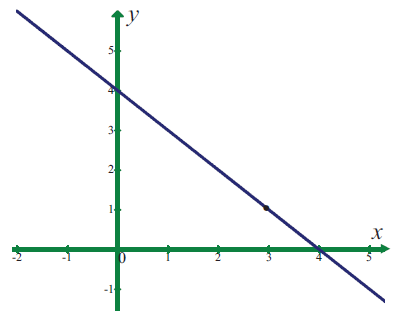HOW TO FIND LIMITS BY LOOKING AT A GRAPH
Subscribe to our ▶️ YouTube channel 🔴 for the latest videos, updates, and tips.
Left hand limit
We say that the left-hand limit of f(x) as x approaches x0 (or the limit of f(x) as x approaches from the left) is equal to l1 if we can make the values of f(x) arbitrarily close to l1 by taking x to be sufficiently close to x0 and less than x0. It is symbolically written as
f(x0-) = lim x ->x0- f(x) = l1

Right hand limit
We say that the right-hand limit of f(x) as x approaches x0 (or the limit of f(x) as x approaches from the right) is equal to l2 if we can make the values of f(x) arbitrarily close to l2 by taking x to be sufficiently close to x0 and greater than x0. It is symbolically written as
f(x0+) = lim x ->x0+ f(x) = l2

From the above discussions we conclude that
lim x->x0 f(x) = L exists if the following hold :
(i) lim x->x0+ f(x) exists,
(ii) lim x->x0- f(x) exists, and
(iii) lim x->x0+ f(x) = lim x->x0- f(x) = L
When we get different values for f(x) as x0 approaches from left and from right, we may say that the function does not exist.
The picture given below will illustrate the concept.


There is no function to the left of x0. Hence the function is not defined.
Example 1 :
Use the graph to find the limits (if it exists). If the limit does not exist, explain why?
lim x->3 (4 - x)

Solution :
|
f(x) = (4 - x) lim x->3- f(x) = 4 - 3 = 1 |
f(x) = (4 - x) lim x->3+ f(x) = 4 - 3 = 1 |
lim x->3 f(x) = 4 - 3 = 1
lim x->3- f(x) = lim x->3+ f(x) = lim x->3 f(x)
The function is defined at x -> 3. Hence the required limit is 1.
Example 2 :
Use the graph to find the limits (if it exists). If the limit does not exist, explain why?
lim x->1 (x2 + 2)

Solution :
|
f(x) = (x2 + 2) lim x->1- f(x) = 12 + 2 = 3 |
f(x) = (x2 + 2) lim x->1+ f(x) = 12 + 2 = 3 |
lim x->1 f(x) = x2 + 2 = 12 + 2 = 3
lim x->1- f(x) = lim x->1+ f(x) = lim x->1 f(x)
The function is defined at x -> 1. Hence the required limit is 3
Subscribe to our ▶️ YouTube channel 🔴 for the latest videos, updates, and tips.
Kindly mail your feedback to v4formath@gmail.com
We always appreciate your feedback.
About Us | Contact Us | Privacy Policy
©All rights reserved. onlinemath4all.com

Recent Articles
-
10 Hard SAT Math Questions (Part - 43)
Jan 04, 26 01:38 AM
10 Hard SAT Math Questions (Part - 43) -
90 Degree Clockwise Rotation
Jan 01, 26 06:58 AM
90 Degree Clockwise Rotation - Rule - Examples with step by step explanation -
US Common Core K-12 Curriculum Algebra Solving Systems of Equations
Jan 01, 26 04:51 AM
US Common Core K-12 Curriculum - Algebra : Solving Systems of Linear Equations
